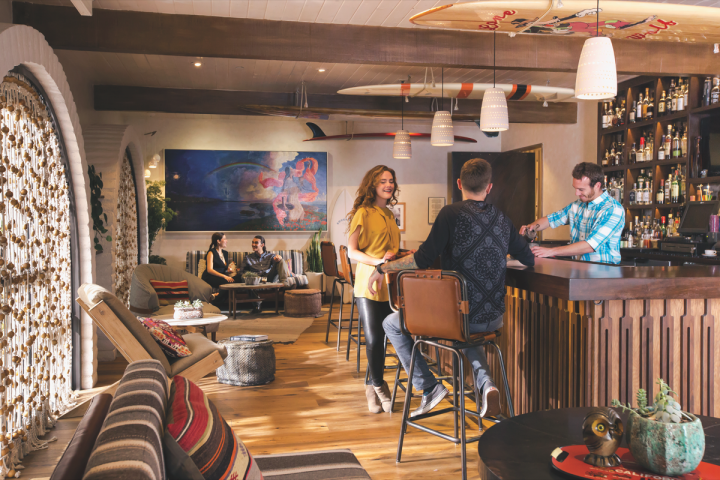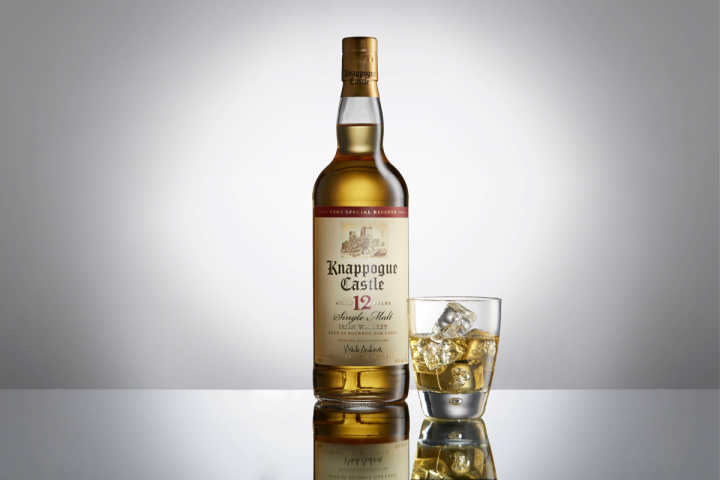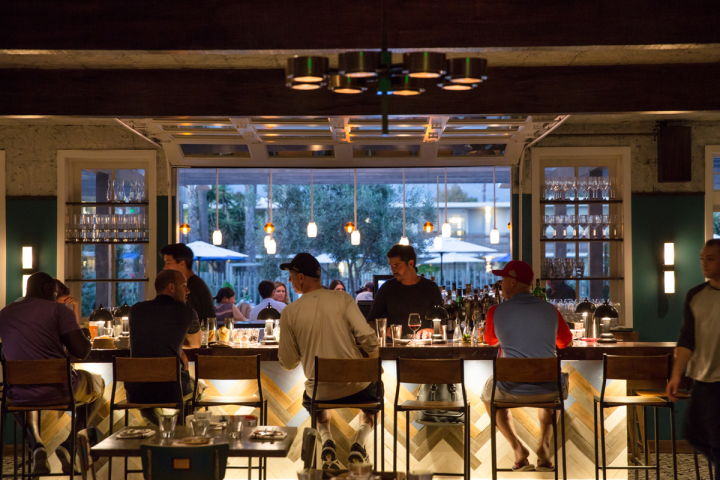
This summer, Brown-Forman Corp. announced that it’s investing $50 million to build a new Irish whiskey distillery in County Meath, Ireland. Separately, at least two prominent new distilleries—one owned by Teeling Whiskey Co. and the other by Dublin Whiskey Co.—have cropped up in Dublin.
Those commitments are just part of the surging investment currently being seen in the Irish whiskey sector. According to the Irish Whiskey Association (IWA), Ireland had just three distilleries operating in 2012—not including Northern Ireland’s Bushmills—but that number had risen to eight by the end of 2014 and is expected to grow higher with several new projects in the works.
Expectations are high. In the “Vision for Irish Whiskey” report published by the IWA earlier this year, chairman Bernard Walsh pointed to the massive size of the Scotch whisky industry. “There is no reason that Ireland cannot achieve similar success,” he wrote.
In fact, one of the IWA’s stated goals is to grow global exports to 12 million nine-liter cases by 2020 and then double volume to 24 million cases by 2030. Irish whiskey producers exported 6.7 million cases worldwide in 2014, according to the IWA.
The U.S. market has been a key driver in the recent success of Irish whiskey. Consumption in the United States increased 8.2 percent to 2.58 million cases in 2014, according to Impact Databank. As volumes rise, marketers see opportunities. “With the growth of Irish whiskey and the number of new distilleries that are opening in Ireland, there’s going to be a lot more innovation, differentiation and potential for premiumization than there has been in years past,” says Cindy Wang, senior brand manager for William Grant & Sons’ Tullamore DEW brand.

Company Involvement
The recent dynamism in the Irish whiskey segment has many international marketers scrambling for a piece of the action. Currently, four of the world’s top 10 spirits marketers have a stake in Irish whiskey. Pernod Ricard is by far the leader with the powerhouse Jameson brand, as well as Powers, Paddy and other labels. Beam Suntory markets Cooley and Kilbeggan, Gruppo Campari launched Irish Mist whiskey in March 2014, and William Grant & Sons unveiled a new $15 million facility for Tullamore DEW last year with an annual capacity of 1.5 million cases—nearly double the brand’s current volume.
And now Brown-Forman is entering the mix. The Louisville, Kentucky–based company purchased all shares of Slane Castle Irish Whiskey Ltd. in June and will invest approximately $50 million over the next couple of years to build a new distillery and consumer experience on the historic Slane Castle Estate in County Meath.
Lawson Whiting, executive vice president and chief brands and strategy officer for Brown-Forman, announced that the company will open the Slane Irish Whiskey Distillery in late 2016 and introduce new Irish whiskies in spring 2017. The company will initially use liquid purchased from other Irish distilleries, while the whiskey made at the new Slane Distillery is laid down to mature.
Other brand owners are investing heavily. Pernod Ricard recently poured a total of 200 million euros in the Midleton Distillery in Cork and a bottling plant in Dublin, according to Jameson brand director Sona Bajaria. “We’re confident that as a result of this investment and this attention, we’re well-placed to service our future growth aspirations,” she says.

Dynamic Push
With the recent volume increases and new brands entering the market, differentiation is taking place within the Irish whiskey segment. Bajaria points out that the vast majority of Irish whiskey volume comes from blended offerings, which are dominated by the Jameson brand. Yet she and others note the innovation currently taking place.
“There are two things happening,” Bajaria says. “One is innovation on existing brands, and the second is new players entering the market. What you’re specifically seeing is a variety of finishes and different types of whiskies. You’re also seeing multiple price points, so consumers have options. The category itself is getting more premium.”
The dynamism is also opening up the sector to emerging brands, both new entrants from major players and smaller labels from other marketers. Castle Brands has two Irish whiskies: the blended Clontarf 1014 and the single malt Knappogue Castle. “It’s very exciting to be in the Irish whiskey segment, even if we are a small player,” says Castle Brands senior vice president of marketing Alejandra Peña. “The fact that consumers are becoming more sophisticated and aware is exciting. For years, people have just been drinking Jameson, but now they’re ready to try other brands.” Peña adds that the burgeoning market is also offering opportunities for price stratification. At $22 a 750-ml. bottle, Clontarf 1014 competes as a “value” brand, while Knappogue Castle occupies a higher pricing tier at $42.
Jack Teeling, managing director of Teeling Whiskey Co., told Shanken News Daily (SND) last year that he believes a broader range of price points is necessary to sustain interest in the category. “The standard Irish whiskey brands are in the $20-to-$30 range,” Teeling said. “Higher up you have whiskies like Redbreast and the Bushmills malts, but there’s not much in the middle. We want to provide a stepping stone and educate American palates because Irish whiskey has more to offer than what they might expect.”
Greater segmentation within the Irish whiskey market is essential if the industry intends to compete with larger categories like American and Scotch whiskies. “The biggest challenge we face as a category is that there’s a lot more breadth and choice in American whiskey—with new craft producers popping up all over—and Irish whiskey risks losing consumers as they explore those varied options,” Teeling told SND.

Whisk(e)y Trading
The overall whisk(e)y category in the United States has been extremely buoyant for the past few years, and marketers say that consumer enthusiasm across all types can be both beneficial and detrimental. “Obviously, the craft whiskey boom really encourages people to explore other brands and make their own decisions,” William Grant’s Wang says. “People have affinity for products with heritage and they’re more willing to pick brands that resonate with them.” She also notes a positive shift in the consumer mind-set. “Consumers are exploring different liquids, hearing brand stories and sharing knowledge with their friends,” she says.
The potential detriment comes when brand loyalty falls by the wayside. “Consumers are more willing to try other whiskies and to introduce new ones into their repertoires,” Pernod Ricard’s Bajaria says. “They’re going between Irish and Bourbon and Canadian whiskies. We’re seeing multiple options within an evening or during the daytime.”
John Bush, the beverage director and coproprietor of New York City–based Three Kings Restaurant Group, believes the transition began when Pernod Ricard USA launched the pot still whiskey Green Spot in the United States in early 2014. “It really made a splash, and people were jazzed about Irish whiskey again,” he recalls. “Now I’m seeing a lot of other Irish whiskies start to come over because Green Spot opened those doors.”
Bush sees a parallel between Irish and American whiskies. “I think Irish whiskey is going through the same thing as Bourbon,” he says. “It used to be Jack Daniel’s or Maker’s Mark and Coke, and then suddenly people started looking for different brands.”
Chris Burmeister, who oversees the bar programs at Outpost restaurant and Good Bar at the Goodland Hotel in Goleta, California, has also noticed an expanded interest in Irish whiskies. “There’s a larger selection now, more distilleries are popping up and people are willing to try something other than their go-to,” he says. “Having some of the smaller brands, along with those that everybody knows like Jameson and Tullamore DEW, encourages people to try different Irish whiskies as they explore the category.”
Major retail chains are also benefiting from the increased variety. Brian Bowden, senior vice president of spirits, beer, tobacco and beverages at BevMo, says new brands, new styles and even flavored whiskies are resonating. “Four years ago, we probably only had 15 to 20 Irish whiskies, if that, and we’ve more than doubled our count because the trend keeps growing,” he explains. The selection at BevMo ranges from the low $20 price point to more than $100 a 750-ml. bottle—another shift from the more streamlined pricing of a few years ago.
Another trend many note is the prevalence of female drinkers in the overall whisk(e)y sector and particularly in Irish whiskey. “It’s still skewing male, but we see more women and younger consumers entering the category,” Pernod Ricard’s Bajaria says. “We’ll see the ratio evolve further in the coming years.”
Matt Buttel, general manager of Nashville, Tennessee’s Embers Ski Lodge, notes an explosion of female consumers drinking Irish whiskey. He first witnessed the trend a few years ago when working in nightclubs with bottle service in Las Vegas. “Overnight, it went from Patrón Tequila to Jameson being the No.-2 bottle request after vodka,” he says.

Cocktail Trends
In Nashville, Buttel sees female consumers enjoying Irish whiskey in various formats. Women drink Irish whiskey neat or in shots, but they also enjoy it in cocktails. The most popular mixed drink call is Jameson and Ginger Ale ($8). At the request of its guests, Embers Ski Lodge now offers a Jameson-based specialty cocktail. The Shim Sham ($12) includes Jameson, simple syrup, peach purée, lemon juice and a house-made soda that features lemongrass, jasmine, Stiegl Radler grapefruit beer, Blue Moon white ale, bergamot, white pepper, celery seed and mirin.
Bush hasn’t observed much interest in Irish whiskey–based cocktails at Three Kings’ six restaurants, perhaps in part because he isn’t really pushing them. “I don’t see the demand too much,” he says. “Since Irish whiskey is hot right now, it’s gone up in price, and there’s a limit for what you can reasonably use in a cocktail.”
No matter the style of consumption, marketers, bartenders and retailers all expect further development of the Irish whiskey sector. “We really have something for everyone now,” says William Grant’s Wang, noting the recent innovation from Tullamore DEW and the category overall. “We’ve gone from being the world’s biggest whisk(e)y category in the early 20th century to having only two distilleries after Prohibition to the current renaissance. Irish whiskey is coming back strong and isn’t stopping.”